Tips and Tools for Success in your Rostrum WA Club
VENUE
- Find a permanent meeting place in a convenient location, which is easy for visitors to find, pleasant to be in and where you can display a sign and posters.
- Consider availability of a meal and beverages–it may determine whether a member stays in the club, or a visitor joins.
- Ensure meetings are relevant with clear objectives and agendas. Survey members to determine what they like and what they consider irrelevant.
PROGRAMME
- Develop interesting meeting agendas which include a variety of speaking exercises such as prepared and impromptu speeches, workshops and tutorials, debates, interviews, play or poetry readings, meeting procedure and themed meetings. Use the resources on the Australian Rostrum website.
- Schedule special events and topics to stimulate discussion and include non-rostered members and visitors. Use Freeman David Price’s book to introduce fun and challenging exercises.
- Conduct speaking competitions within the club to give members experience in competitive speaking.
- Hold joint meetings with other clubs to boost numbers, get exposure to other speakers’ methods and styles, and build rapport. Promote the event.
- Invite Critics, Freemen, Rostrum leaders and outside speakers to conduct special interest workshops–and promote them to other clubs and the community.
- Keep long-term members engaged with challenges rather than assigning the usual agenda items.
- Help new members by appointing a mentor for them, especially during the PDP, assigning simpler exercises and providing helpful, positive critiques.
- Distribute the agenda well in advance and encourage members to be punctual and to come prepared for meetings.
- The critic/coach is important to the growth of the club and should be in synch with the club’s culture. He or she should also be prepared to point out problems in the club and offer suggestions to overcome them. Encourage members to do critic training to help them become better speakers.
- Determine what has worked elsewhere; visit other clubs and share ideas. What could you learn from ‘Club of Excellence’ clubs?
SOCIAL ASPECTS
- Foster an inclusive atmosphere in the club–look after all members, whether committed or not, young or not so young, new or long term.
- Keep in touch by circulating a contact list amongst members, and chase up absentees.
- Encourage social interaction with special events such as a bbq or picnic, sports outing, Christmas function or a weekend away.
- Welcome visitors, introduce them to members and explain the meetings to them. Follow up after the meeting, but avoid ‘hounding’ them.
- Control powerful personalities in the club as they may discourage visitors from returning.
PROMOTION AND MARKETING
- Promotion and marketing are high priority activities and should be ongoing to be effective. Identify what makes your club special and promote that aspect.
- Compile a Visitor Information Kit–it demonstrates to visitors that the club is well organised. Have nomination forms and induction materials always on hand. Send agenda and notices of coming events to visitors and guests, and follow up.
- Promote the club in the local area. Prepare and distribute eye-catching signs, posters and flyers for display in businesses, shops, libraries, public areas and council offices. Let businesses know what Rostrum training can offer their staff.
- Advertise in the local newspaper– it’s usually free.
- Advertise your club in another organisation’s newsletter–and return the favour.
- Use the internet. Promote the Rostrum WA website to new and existing members. Upload club photos to the Rostrum WA Facebook page as well as status updates with information about directions to the meeting location, agendas, special events and blogs. Post to it regularly to keep content current. Consider including a youtube clip.
- Investigate social media for promotion and marketing and enlist younger members to run this to keep it current and ‘live’. Use your clubs ‘MeetUp’ page to promote your club to potential new members who are looking for networking and professional/ personal development groups.
- Chase up former members and invite them to re-join; have a reunion meeting.
- Seek out possible sources of new members amongst university students and past RVOY participants. Encourage young people to join by subsidising students and the unemployed.
- Be passionate in promoting Rostrum–stress the importance of practical experience and learning by doing.
- Seek local sponsorship and apply for community grants for events in which the community can participate and at which you can promote Rostrum and your club.
MANAGEMENT
- The President, Secretary, Membership Officer and Treasurer have the responsibility to manage the club. As a member, speak up if you are not happy with the discipline in the club.
- The President must take the initiative and inspire members, lead by example and make visitors feel welcome.
- The committee must plan the year’s broad schedule of events, set membership targets and encourage all members to participate.
- Nurture newer members and encourage them to take on leadership roles when ready.
- Regularly review the club’s management, venue, programme, promotion and marketing.
- Remember that members are a club’s greatest asset–always look after them. It is easier to retain than recruit.
Compiled from Freeman Peter Martindale’s presentations at the AGM and Convention, and the club workshops session.


